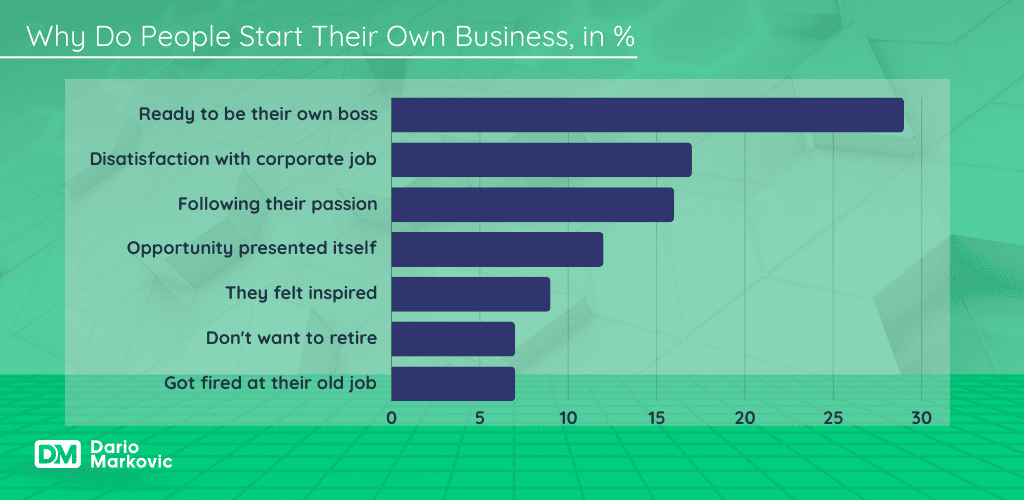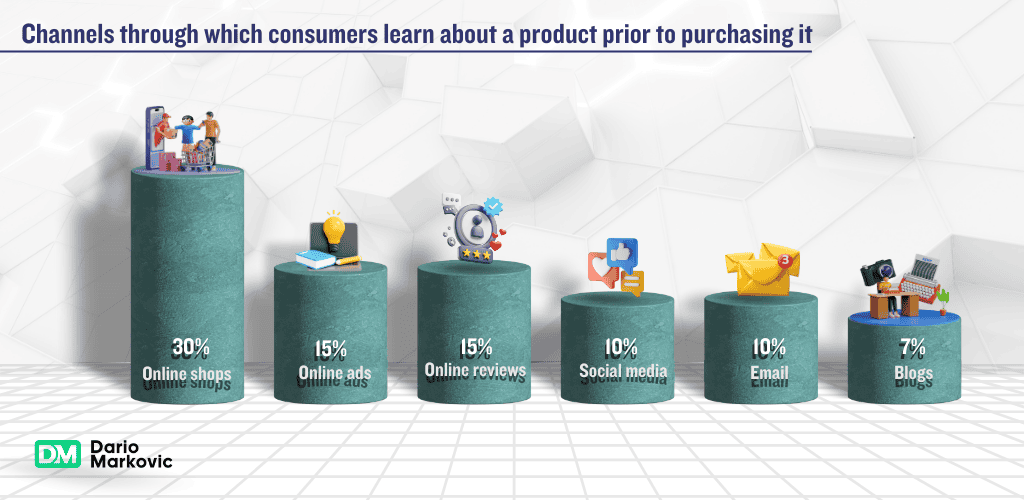Launching an online business and choosing which shop ideas to actualize into your reality is an exciting journey that combines creativity, strategy, and determination. But it can also be confusing: There are so many shop ideas out there—where to start?
Whether you’re a budding entrepreneur or an experienced business owner, the digital landscape offers immense opportunities. In this comprehensive guide, we’ll delve into the essential steps, trends, and practical insights to help you succeed in the ever-evolving world of e-commerce.

Understanding Your Audience When Choosing Shop Ideas For Your Online Business
Before undertaking your e-commerce journey, take a moment to understand the heartbeat of your potential customers. The success of your online store hinges on how well you connect with your audience. Let’s break it down methodically:
1. Demographics: Know Your People
Demographics provide the scaffolding for your buyer persona. Here’s what to delve into:
- Age: Different age groups have distinct preferences. Are you catering to Gen Z, millennials, or baby boomers? Each cohort interacts with online stores differently.
- Gender: Understand gender dynamics. Some products resonate more with specific genders. For instance, skincare might appeal more to women, while tech gadgets attract a diverse audience.
2. Location: Think Globally, Sell Locally
Geography matters. Tailor your offerings based on where your audience resides:
- Local Flavor: If you’re targeting a specific city or region, incorporate local trends and cultural nuances. Highlight products that resonate with the local community.
- International Reach: For global audiences, consider shipping logistics, currency conversion, and language localization. Your online store should feel welcoming to visitors from around the world.
3. Interests: Dive into Psychographics
Beyond demographics, psychographics delve into attitudes, personality traits, and lifestyle choices:
- Attitudes: What motivates your audience? Are they eco-conscious, tech-savvy, or value-driven? Align your messaging accordingly.
- Personality: Introverts and extroverts shop differently. Some seek personalized experiences, while others enjoy social shopping.
- Lifestyle: Understand their daily routines. Are they fitness enthusiasts, homebodies, or adventure seekers? Your product offerings should complement their lifestyles.
Crafting Your Buyer Persona
Let’s create your buyer persona—a fictional representation of your ideal customer. Give them a name, backstory, and quirks. Imagine their daily life, aspirations, and pain points. This persona will guide your marketing decisions, content creation, and product selection.
Remember, data is your ally. Use analytics tools to gather insights about your website visitors. Monitor behavior, track conversions, and adjust your strategy accordingly. Your audience isn’t static; it evolves, so stay curious and adapt.
1. Empathy and Research
- Market Research: Dive into market research. Analyze demographics, behavior patterns, and preferences. Tools like Google Trends, social media analytics, and surveys can provide valuable insights.
- Walk in Their Shoes: Put yourself in your customers’ shoes. What are their pain points? What solutions are they seeking? Understand their needs, desires, and challenges.
2. Listen and Engage
-
Social Listening: Monitor social media conversations. What are people saying about your niche? Engage in discussions, answer questions, and show genuine interest.
- Feedback Loop: Encourage feedback. Listen to your customers, whether through reviews, surveys, or direct communication. Their insights are gold.
3. Personalize Your Approach
- Email Marketing: Craft personalized emails. Address customers by name, recommend products based on their browsing history, and celebrate milestones (birthdays, anniversaries).
- Customized Content: Personalize your website, emails, and product recommendations. Use data to deliver relevant content.
4. Build Trust and Transparency
- Clear Policies: Be transparent about shipping, returns, and privacy. Trust is fragile; don’t break it.
- Customer Reviews: Showcase genuine reviews. Positive experiences build trust.
Remember, your online store isn’t just about transactions—it’s about relationships. Connect authentically, and your audience will become loyal advocates.
Selecting Profitable Products - Shop Ideas for 2024
In the vast ocean of e-commerce, choosing the right products is akin to navigating treacherous waters. To help you out, we’ve charted a course for you, highlighting some of the most promising shop ideas for 2024. These products are like well-rigged sails—they catch the winds of consumer demand and propel your online business forward.
1. Power Banks: Charged Up and Ready
Power banks—those trusty portable chargers—are the unsung heroes of our digital lives. As mobile device usage soars, power banks become essential companions. Consider variations with sleek designs, fast-charging capabilities, and multiple ports. Your customers will thank you during their next travel adventure or outdoor escapade.
2. Cargo Pants: Where Style Meets Function
Cargo pants are making a comeback, and not just for hiking enthusiasts. These versatile trousers blend style and utility seamlessly. Think pockets galore, durable fabrics, and a rugged aesthetic. Whether your customers explore the wilderness or simply stroll through the urban jungle, cargo pants are a wardrobe staple.
3. Beanies: Cozy Comfort for All Seasons
Beanies aren’t just for winter anymore. These snug head-huggers have transcended seasons, becoming year-round accessories. From chunky knits to lightweight blends, beanies offer warmth, style, and that effortless “I woke up like this” vibe. Plus, they’re a canvas for quirky patches, slogans, and embroidered art.
4. Lip Stain: The Subtle Power Move
Move over to traditional lipstick! Lip stains are the new darlings of the beauty world. Why? They deliver long-lasting color without the heavy feel. Perfect for busy days, virtual meetings, and masked outings. Plus, lip stains come in various shades, from barely-there nudes to bold reds. Pucker up!
5. Pimple Patches: Spot-On Skincare
Acne woes? Enter pimple patches—the tiny heroes that tackle zits overnight. These hydrocolloid wonders absorb excess oil, reduce inflammation, and protect blemishes from prying fingers. Pop one on, sleep peacefully, and wake up to clearer skin. Your customers will thank you for this discreet skincare solution.

3 More Shop Ideas
1. Hair Oil: Tresses Deserve TLC
Healthy, lustrous hair never goes out of style. Hair oils—enriched with nourishing ingredients like argan, coconut, or jojoba—work wonders. They tame frizz, add shine, and promote hair growth. Whether your customers have Rapunzel-length locks or a chic bob, hair oil is their secret weapon.
2. Baby Carriers: Bonding and Convenience
Parents juggle a thousand tasks, and baby carriers are their multitasking allies. Ergonomic designs, breathable fabrics, and adjustable straps make babywearing a breeze. From newborn snuggles to toddler adventures, these carriers keep little ones close while freeing up parents’ hands. It is a win-win for everyone.
3. Bohemian Earrings: Dangling Delights
Bohemian vibes are here to stay, and statement earrings lead the charge. Think intricate designs, tassels, feathers, and natural materials. These earrings transform any outfit from mundane to magical. Whether your customers are festival-goers or office rebels, bohemian earrings add that touch of wanderlust.

Remember, trends ebb and flow, but understanding your audience is the compass that guides your product selection. Dive into analytics, listen to customer feedback, and set sail toward profitable shores.
For more inspiration, explore e-commerce blogs and keep your finger on the pulse of consumer preferences.
Another 9 Shop Ideas for Your Business
Let’s explore another 9 best shop ideas for 2024. While some of these can apply to physical and online businesses, I’ll emphasize aspects relevant to online business wherever possible.
Here’s the list:
1. Niche Subscription Boxes: Curate specialized subscription boxes (e.g., eco-friendly products, self-care items, pet supplies) and offer them repeatedly.
2. Personalized Gifts: Create an online shop that customizes gifts based on individual preferences, such as monogrammed accessories or custom artwork.
3. Eco-Friendly Products: Sell sustainable and environmentally conscious goods, from reusable kitchenware to zero-waste toiletries.
4. Digital Downloads: Offer digital products like e-books, printables, or stock photos.
5. Virtual Events Supplies: Sell equipment like green screens, lighting kits, and microphones to meet the growing demand for virtual events.
6. Health and Wellness Products: Tap into the wellness trend from fitness gear to organic supplements.
7. Pet Accessories: Pet owners seek unique toys, grooming tools, and stylish pet wear.
8. Smart Home Gadgets: Capitalize on the smart home revolution by selling gadgets like smart plugs, security cameras, and voice-controlled devices.
9. Plant-Based Foods: With the rise of plant-based diets, consider selling vegan snacks, ingredients, or meal kits.
Setting Up Your Online Store
Now that you have product ideas let’s build your online store step by step:
Steps:
- Choose an E-commerce Platform: Consider Shopify, Wix, or Squarespace1.
- Design Your Brand: Create a memorable logo and choose a color scheme.
- Set Up Product Pages: Add high-quality images, detailed descriptions, and pricing.
- Configure Payment Gateways: Connect with PayPal, Stripe, or other providers.
- Get a Domain Name: Make it memorable and relevant to your brand.
Compare The Critical Features of Wix, Shopify, and Squarespace

Optimizing Your Website
Your website’s functionality matters. Optimize it for a seamless user experience:
Optimization Tips:
- Mobile-Friendly Design: Most users shop on their phones.
- Fast Loading Times: Reduce bounce rates.
- Clear Navigation: Intuitive menus and categories.
- Secure Checkout: SSL certificates and trust badges
Launching Your Store
It’s time to go live! Here’s what to do before the big launch:
Pre-Launch Checklist:
- Test Everything: Ensure links, buttons, and forms work.
- SEO Optimization: Optimize product descriptions and meta tags.
- Shipping and Returns Policy: Be transparent with customers.
- Promotions: Plan launch discounts or special offers.

Marketing Strategies
Your store is up, but how do you attract customers? Let’s explore marketing tactics:
Marketing Channels:
- Social Media: Leverage platforms like Instagram, Facebook, and Pinterest.
- Email Campaigns: Build a subscriber list and send targeted emails.
- Content Marketing: Blog posts, videos, and guides.
- Influencer Collaborations: Partner with relevant influencers.
Measuring Success
Track your progress and make data-driven decisions:
Metrics to Monitor:
- Conversion Rate: How many visitors make a purchase?
- Average Order Value: Increase it over time.
- Customer Lifetime Value: Retain loyal customers.
- Traffic Sources: Identify where your visitors come from.
Remember, building a successful online store takes dedication and continuous improvement. Stay informed, adapt to trends, and provide exceptional customer service.
Dario’s Takeaway
1. Begin Incrementally
Starting an online business need not be an all-or-nothing endeavor. The wisdom lies in taking gradual steps. Here’s how:
-
Part-Time Side Hustle: Begin by dipping your toes into the e-commerce waters. Consider it a side hustle alongside your existing commitments. Whether selling handmade crafts, offering consulting services, or dropshipping products, starting part-time allows you to test the waters without overwhelming yourself.
-
Learn and Adapt: Use this initial phase to learn the ropes. Understand your target audience, explore different marketing channels, and fine-tune your offerings. As you gain insights, adapt your strategy accordingly. Remember, Rome wasn’t built in a day, and neither is a successful online business.
2. The Beauty of Staying Small
Embrace the simplicity of staying small. Here’s why it’s advantageous:
-
Low Overhead Costs: Unlike a brick-and-mortar store, an online business doesn’t require hefty upfront costs for rent, utilities, or physical inventory. Your main expenses may include website hosting, marketing, and product sourcing.
-
Agility and Flexibility: A small online business is nimble. You can pivot quickly, experiment with new ideas, and respond to market trends. Being agile allows you to seize opportunities and adapt to changing customer preferences.
-
Personal Connection: You can build genuine customer relationships when you’re small. Engage with them on social media, respond to their inquiries promptly, and create a loyal community around your brand.
3. Scaling Gradually
As your online venture gains traction, consider scaling up:
-
Invest Wisely: Reinvest profits strategically. Whether improving your website, expanding product lines, or hiring help, allocate resources where they’ll yield the most impact.
-
Automate Processes: Leverage automation tools. From order fulfillment to customer support, automation streamlines operations, you are freeing up your time for strategic decisions.
-
Expand Your Reach: Explore new markets, collaborate with influencers, and optimize your SEO. Scaling doesn’t always mean going big; it can also mean going broader.
The allure of online entrepreneurship lies in its flexibility—you choose your path. As the eCommerce industry thrives, more sellers transition to online business ownership. The beauty? It offers boundless opportunities without the hefty startup costs of a traditional brick-and-mortar venture.
FAQ
- Low Startup Costs: Online businesses typically require less initial investment compared to brick-and-mortar ventures.
- Global Reach: You can reach customers worldwide, transcending geographical boundaries.
- Flexibility: Work from anywhere, set your own hours, and adapt as needed.
- Scalability: Start small and grow gradually.
- Basic technical skills are helpful, but not mandatory. Platforms like Shopify, WordPress, and Etsy simplify the process.
- Register your business (choose a legal structure: sole proprietorship, LLC, etc.).
- Obtain necessary licenses and permits.
- Comply with tax regulations.
- Research market trends and demand.
- Consider your interests, skills, and audience preferences.
- Test product ideas before committing.
- Create a memorable brand name, logo, and consistent visual identity.
- Use social media, content marketing, and email campaigns to reach potential customers.



